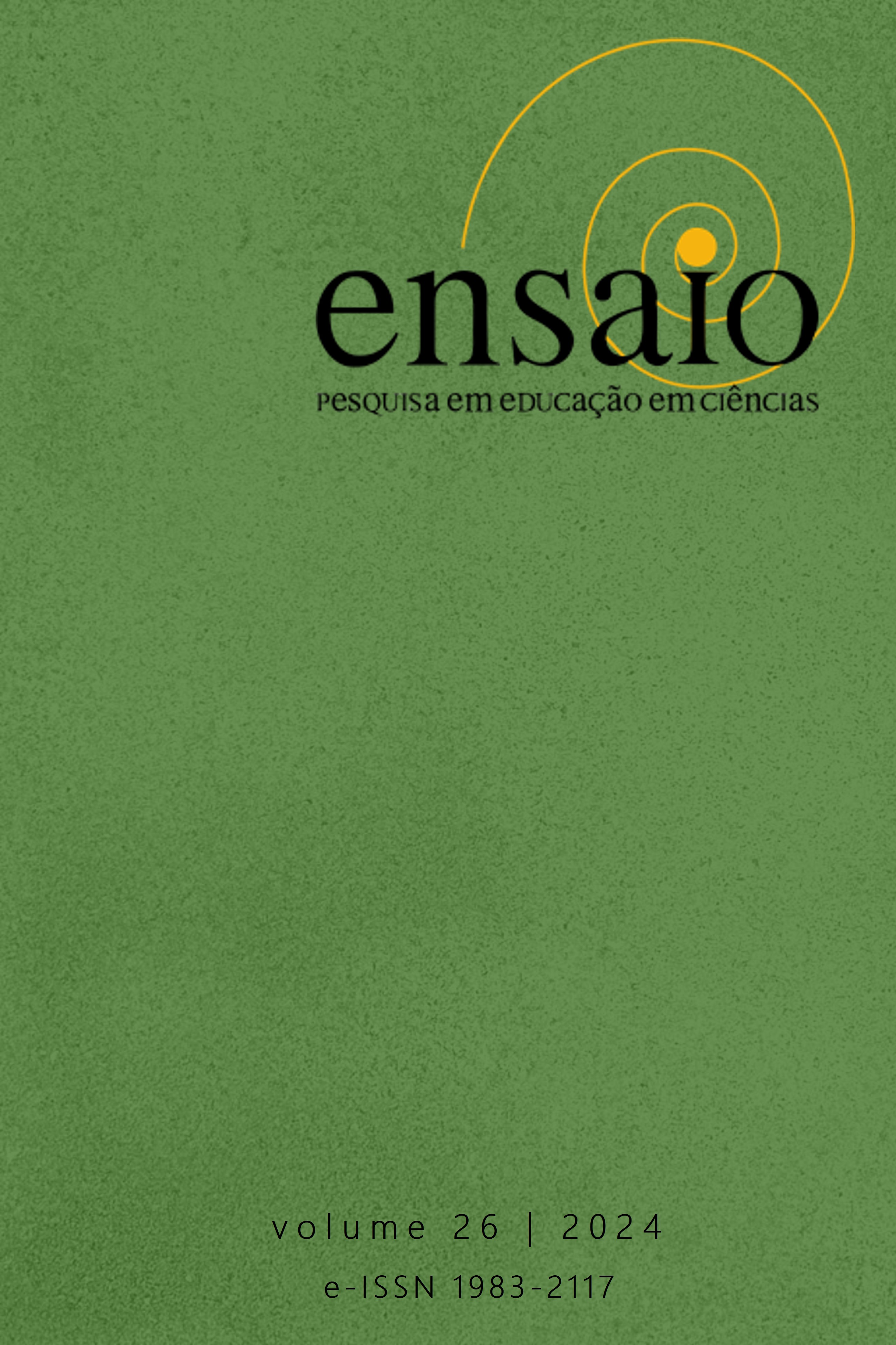MEMORY AND MEANING MAKING ABOUT CHEMICAL SUBSTANCE:
AN ANALYSIS FROM REMEMBERING THEORY
DOI:
https://doi.org/10.1590/1983-21172022240190Keywords:
Remembering, Memory, Meaning MakingAbstract
The aim of this article was to analyze how two elementary school students constructed meanings about the concept of chemical substance based on the theory of reminiscence. For this purpose, we adapted Bartlett's description method, and the two students, working in pairs, completed a pre-test, explored three educational materials on the concept of chemical substance, and then answered three questions about the concept at intervals of thirty minutes, seven days, and fifteen days. The dialogue between the pair was recorded in audio and video during the question-solving process for subsequent transcription and analysis. In the analysis, we observed some mnemonic modifications such as elaborations, transformations, transfers, and imports. These modifications may express the emergence of new meanings through the reframing of previous knowledge in the face of the new.
Downloads
References
Alloway, T.P. & Gathercole, S.E. (2006). Working memory and neurodevelopmental disorders Hove, UK: Psychology Press.
Andrade, W. T. V. S., Silva, S. F. S., dos Santos, É. V. A., Dutra, M. L., de Melo, T. O., & de Oliveira Fermoseli, A. F. (2021). A relação neurofisiológica existente entre memória e aprendizagem: Uma revisão bibliográfica.Caderno de Graduação-Ciências Biológicas e da Saúde-UNIT-ALAGOAS, 6(3), 66-66.
Bartlett, F. C. (1932). Remembering: a study in experimental and social psychology New York: Cambridge University Press.
Bellas, R. R., Queiroz, I. R., Lima, L. R. F. C., & Silva, J. L. P. B. (2019). O conceito de substância química e seu ensino.Química Nova na Escola,41(1), 17-24. https://doi.org/10.21577/0104-8899.20160143
» https://doi.org/10.21577/0104-8899.20160143
Brandeis, R., Brandys, Y., Yehuda, S. (1989). The use of the Morris water maze. In The Study of Memory and Learning. International Journal of Neuroscience (Vol. 48, pp. 29-69). https://doi.org/10.3109/00207458909002151
» https://doi.org/10.3109/00207458909002151
Edwards, D., & Middleton, D. (1987). Conversation and remembering: Bartlett revisited. Applied Cognitive Psychology, 1, 77-92. https://doi.org/10.1002/acp.2350010202
» https://doi.org/10.1002/acp.2350010202
Kintsch, W., & Bates, E. (1977). Recognition Memory for Statements from a Classroom Lecture. Journal of Experimental Psychology: Human Learning and Memory (Vol. 3, No. 2, pp. 150-159). https://doi.org/10.1037//0278-7393.3.2.150
» https://doi.org/10.1037//0278-7393.3.2.150
Lombroso, P. (2004). Aprendizado e memória.Brazilian Journal of Psychiatry,26, 207-210. https://doi.org/10.1590/S1516-44462004000300011
» https://doi.org/10.1590/S1516-44462004000300011
Lucena, A. D. F. (2002). Análise ideográfica e nomotética na pesquisa qualitativa com abordagem fenomenológica.Revista HCPA, Porto Alegre
Northway, M. L. (1940). The concept of “schema”: Part I. British Journal of Psychology, 30, 316-325. https://doi.org/10.1111/j.2044-8295.1940.tb00964.x
» https://doi.org/10.1111/j.2044-8295.1940.tb00964.x
Pavão, R. (2008). Aprendizagem e memória.Revista da Biologia, 1, 16-20.
Rocha-Filho, R. C., Tolentino, M., Silva, R. D., Tunes, E., & SOUZA, E. D. (1988). Ensino de conceitos em Química. III. Sobre o conceito de substância.Química Nova,11(4), 417-419.
Silva, J. R. R. T. D. (2017). Diversos modos de pensar o conceito de substância química na história da ciência e sua visão relacional.Ciência & Educação(Bauru),23, 707-722. https://doi.org/10.1590/1516-731320170030011
» https://doi.org/10.1590/1516-731320170030011
Silva, J. R. R. T., Lyra, M. C., & Wagoner, B. (2020). The Microgenetic Analysis of Remembering and Imagining in the Process of Learning Scientific Concepts.Imagining the Past, Constructing the Future, 47-69. https://doi.org/10.1007/978-3-030-64175-7_4
» https://doi.org/10.1007/978-3-030-64175-7_4
Silva, F. C. V. (2017). Análise de diferentes modos de pensar e formas de falar o conceito de ácido/base em uma experiência socialmente situada vivenciada por licenciandos em química. [Tese de Doutorado, Universidade Federal Rural de Pernambuco, Recife .
Valsiner, J. (2014). An Invitation to Cultural Psychology Londres:SAGE Publications Ltd. https://doi.org/10.4135/9781473905986
» https://doi.org/10.4135/9781473905986
Vigotski, L. S. (1934). The problem of the environment. In R.Van der Veer & J. Valsiner (Orgs.), The Vygotsky Reader(pp. 338-354). Oxford: Blackwell Publishers.
Vigotski, L. S. (1995). Obras completas. Tomo cinco. Fundamentos de defectologia Tradução do Programa de Ações Relativas às Pessoas com Necessidades Especiais (PEE).
Vigotski, L.S. (2000). A construção do pensamento e da linguagem (P. Bezerra, Trad.). São Paulo: Martins Fontes.
Wagoner, B. (2011). Meaning construction in remembering: A synthesis of Bartlett and Vygotsky. In P. Stenner, J.; Cromby, J.; Motzkal; J. Yen(Eds.), Theoretical Psychology: Global Transformations and Challenges (pp. 105-114). Toronto: Captus Press.
Wagoner, B. (2013). Bartlett’s concept of schema in reconstruction. Theory & Psychology, 23(5), 553- 575. https://doi.org/10.1177/0959354313500166
» https://doi.org/10.1177/0959354313500166
Wagoner, B., & Gillespie, A. (2014). Sociocultural mediators of remembering: An extension of Bartlett’s method of repeated reproduction. British Journal of Social Psychology, 53(4), 622-639. https://doi.org/10.1111/bjso.12059


